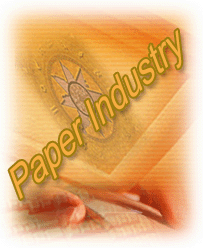 |
| Paper makers pursue ¡®green' materials, practices |
|
http://www.paper.com.cn
2011-05-24 |
|
Companies use recycled and wood-free inputs to preserve forest resources.
Paper suppliers in China are implementing various strategies to promote environmental protection.
For most makers, recycling has emerged as a viable measure because of its many advantages. To illustrate, reprocessing a ton of paper yields approximately 8,500kg of materials. This procedure also enables companies to save about 3m³ of timber, 100m³ of water, 12 kilotons of coal and 600kW of electricity compared with the manufacture of pure wood pulp versions.
The surface of recycled variants, however, is not as smooth and white as those of virgin equivalents, prompting suppliers to enhance pulping technology.
To achieve this, the Shandong Chenming Paper Group has hired specialists to improve the deinking process and dust removal, and produce models with greater strength and brightness. Among the company's clients are Dell and Sony.
The adoption of wood-free alternatives such as bamboo, reed and sugarcane fibers is increasing as well. Of these, more makers are favoring the first because it has attributes similar to those of pure wood pulp. Fiber-based releases, however, are typically manufactured inland where resources are abundant. This raises freight costs and lengthens delivery time.
Apart from a factory devoted to wood pulp products in Shandong province, Shandong Jiawang Industrial Co. Ltd has plants in Sichuan and Shaanxi provinces for bamboo and reed models, respectively.
The supplier indicated that transporting one TEU of paper by land from the former location to a coastal port takes one week and necessitates a budget of $1,400. Shipping via sea, meanwhile, requires a month and costs $400. As a result, the company's bamboo designs are priced between 7 and 14 percent higher than wood pulp counterparts. Shandong Jiawang exports models mainly to the US, Europe, Japan and Brazil.
Stone paper, made mostly of calcium carbonate, is likewise gaining popularity. The manufacture of such releases does not entail the use of water and bleaching agents, thereby causing less environmental strain.
The bulk of enterprises, however, are not stationery supplies specialists, and focus production on the domestic market.
Seeing the profitability of shipping overseas, Shanghai Shike Stone Paper Co. Ltd is currently setting up a department that will concentrate on exports. In addition, the maker is establishing several factories in different parts of mainland China. Its plant in Anhui province began operations last February, and has been receiving orders and partnership proposals from buyers in the US, Japan and Germany.
Shanghai Shike is a branch of Taiwan-based Lung Meng, which provides stone models to various clients in Australia, Europe, Asia and North America.
Some large businesses are likewise taking part in forest preservation by promoting sustainable material sources.
Shandong Chenming, for example, started growing eucalyptus trees in Zhanjiang city of Guangdong province in May 2010. The project, still in its first phase, is anticipated to yield 1 megaton of wood pulp annually.
Last year, Shandong Sun Paper Industry Joint Stock Co. Ltd spent $200 million on the establishment of a paper mill and the use of a 100,000 hectare land in Laos. The area will serve as a plantation for eucalyptus and acacia trees. With these in place, the supplier expects to produce 300 kilotons of bleached hardwood kraft pulp every 12 months.
A number of top-tier manufacturers are investing heavily in pollution control as well. Shandong Chenming, Shandong Sun Paper and Shandong Huajin Group Co. Ltd have allocated $300 million, $153 million and $55 million, respectively, for reducing the COD and energy consumption of their factories.
Part of Shandong Chenming's enhancement efforts is the improvement of black dye extraction during wastewater treatment. At present, the supplier's technology can remove 97 percent of black liquid, lowering COD by 3.38 tons per day. The company is also enlarging the capacity of its alkali recycling system to decrease the load of midwater. This step raises the alkali recycling rate by more than 90 percent.
Additionally, Shandong Chenming has developed a treatment technology that can make wastewater a suitable substitute for fresh water during pulping. This engineering advancement, which has the approval of Shandong's Science and Technology, Finance and Environment Protection departments, is able to recycle 40,000m³ of water daily.
Shandong Sun Paper, meanwhile, employs the two-stage anaerobic and aerobic wastewater treatment system, cutting COD emissions from 420mg/L in 2005 to the present 60mg/L.
Further, both the company and Shandong Huajin have established wetland parks to educate people on the importance of pollution control and water conservation. These feature oxidation ponds filled with ornamental fish. |
| |
|
|
|


